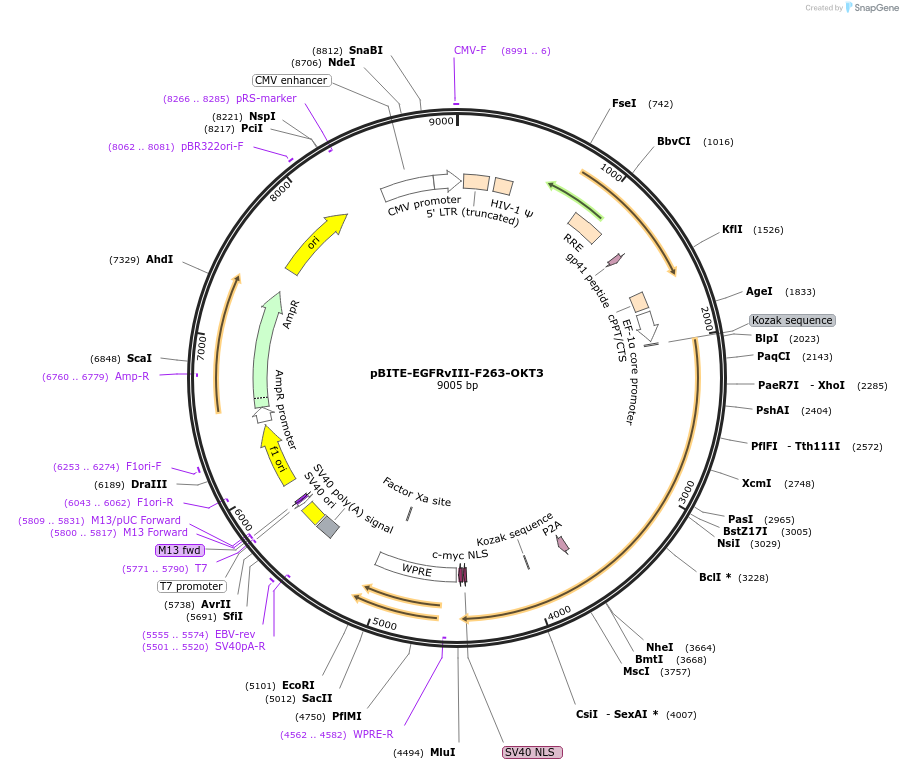pBITE-EGFRvIII-F263-OKT3
(Plasmid
#190680)
-
PurposeEncodes an EGFRvIII-CD3 BITE protein (F263 clone)
-
Depositing Lab
-
Sequence Information
Ordering
| Item | Catalog # | Description | Quantity | Price (USD) | |
|---|---|---|---|---|---|
| Plasmid | 190680 | Standard format: Plasmid sent in bacteria as agar stab | 1 | $89 | |
Backbone
-
Vector backboneDerived from pSLCAR
-
Backbone manufacturerSynthetic
-
Vector typeMammalian Expression, Lentiviral
Growth in Bacteria
-
Bacterial Resistance(s)Ampicillin, 100 μg/mL
-
Growth Temperature37°C
-
Growth Strain(s)NEB Stable
-
Copy numberHigh Copy
Gene/Insert
-
Gene/Insert nameAnti-EGFRvIII-scFv-F263-modularized-OKT3-HisTag
-
Alt nameBlinatumomab Biosimilar
-
SpeciesM. musculus (mouse), Synthetic
-
Insert Size (bp)2484
- Promoter EFS
-
Tag
/ Fusion Protein
- mNeonGreen (C terminal on insert)
Cloning Information
- Cloning method Restriction Enzyme
- 5′ cloning site BpiI (destroyed during cloning)
- 3′ cloning site BpiI (destroyed during cloning)
- 5′ sequencing primer CGCAACGGGTTTGCCGCCAGAACACAG
- (Common Sequencing Primers)
Resource Information
Terms and Licenses
-
Academic/Nonprofit Terms
-
Industry Terms
- Not Available to Industry
Trademarks:
- Zeocin® is an InvivoGen trademark.
Depositor Comments
Please visit https://www.biorxiv.org/content/10.1101/2022.08.17.504342v1 for bioRxiv preprint.
These plasmids were created by your colleagues. Please acknowledge the Principal Investigator, cite the article in which the plasmids were described, and include Addgene in the Materials and Methods of your future publications.
-
For your Materials & Methods section:
pBITE-EGFRvIII-F263-OKT3 was a gift from Scott McComb (Addgene plasmid # 190680 ; http://n2t.net/addgene:190680 ; RRID:Addgene_190680) -
For your References section:
A simplified function-first method for the discovery and optimization of bispecific immune engaging antibodies. Shepherd A, Bennychen B, Marcil A, Bloemberg D, Pon RA, Weeratna RD, McComb S. PLoS One. 2023 Jun 22;18(6):e0273884. doi: 10.1371/journal.pone.0273884. eCollection 2023. 10.1371/journal.pone.0273884 PubMed 37347762



